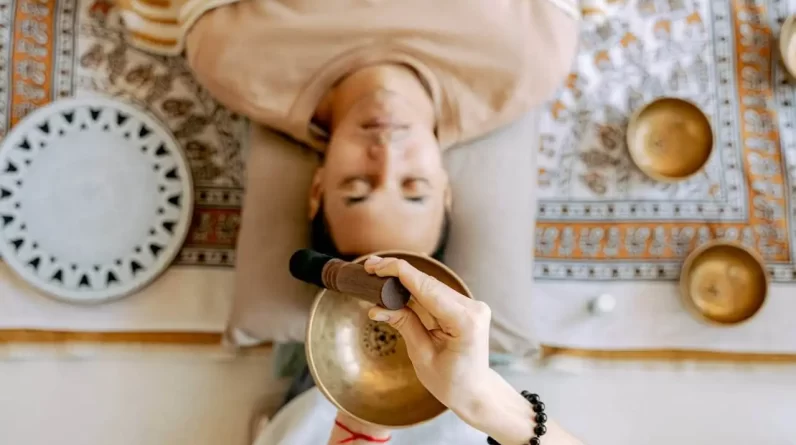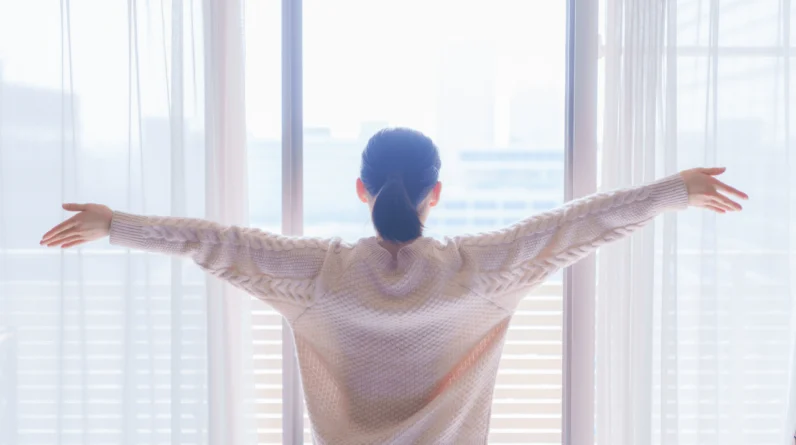
Are you feeling a whisper in your soul?
A yearning for something more profound?
Maybe a connection greater than yourself?
If this sounds familiar, your spiritual side may need a little love and perhaps a bit of exploration! But how can you begin to dive into this side of yourself?
If you’re new to exploring your spiritual side, know that this is a deeply personal journey. It’s very specific to each person as you learn to connect with your inner self, the world around you, and even something beyond this.
Generally, most find spirituality means finding a sense of purpose or peace within themselves.
But again, it’s a very personal journey!
While common practices like yoga, meditation, and journaling are excellent starting points, a world of lesser-known spiritual practices is waiting to be explored.
So, let’s find out how you can become more spiritually “woke” and expand your existing spiritual practice or even begin a new one!
What are Some Spiritual Activities?
Spiritual activities can take many forms.
Indian Monk and philosopher Swami Vivekananda is well-known for saying,
“There is no other spiritual teacher than your own soul.”
In other words, a spiritual practice is any practice that helps you connect with your inner self, nature, or a higher power.
These activities often involve mindfulness, introspection, and a sense of connection to something greater than oneself. And this can, again, greatly vary from person to person.
But if the usual practices, like yoga, meditation, and breathwork, haven’t been speaking to you lately, perhaps these ones will.
1. Sound Bathing
Sound bathing, also known as sound therapy, involves immersing yourself in soothing sounds and vibrations produced by instruments like singing bowls, gongs, or tuning forks.
This practice is based on the principle that specific sound frequencies can positively affect our physical and emotional well-being.
Essentially, sound bathing can induce a meditative state, reduce stress, and promote relaxation. The vibrations are believed to balance your energy and create a sense of harmony within.
So, how can you get started with this practice?
Well, you could start by finding sound bath sessions in your area or online (such as on YouTube or other platforms). Alternatively, you can create your own experience at home using singing bowl apps or recordings.
Like meditation, it can help to start with a smaller amount of time and gradually build as your practice deepens.
Related Article: What is Kundalini Energy? The Benefits & How Can It Help You
2. Forest Bathing
Originating in Japan as “shinrin-yoku,” forest bathing involves spending time in nature.
As you walk or sit in the forest or natural canopy of the trees, you use all your senses to connect with the forest environment and ground yourself. It’s not about hiking or exercising, but rather about being present and soaking in the atmosphere of the forest.
All in all, forest bathing can reduce stress, improve mood, and boost your immune system. It also fosters a deep connection with nature, which many consider a spiritual experience.
So, consider finding a nearby forest or park and spend at least 20 minutes there. Walk slowly (or sit! Listen to what you need.), breathe deeply, and engage all your senses. Notice the sounds, smells, and textures around you.
Forest Bathing: How to Relieve Stress in Nurturing Nature
3. Labyrinth Walking
A labyrinth is a circular path that leads to a center point.
Unlike a maze, there are no dead ends—you simply follow the path to the center and back out again. Many parks, churches, and retreat centers have open labyrinths for the public to enjoy or use.
In many ways, walking a labyrinth can be a form of moving meditation, helping you quiet your mind and focus on the present moment. It’s often used as a tool for reflection, problem-solving, or simply finding peace.
TIP: As you walk, focus on your breath and the sensation of your feet touching the ground. You can set an intention before you begin or simply remain open to whatever thoughts or insights arise.
4. Ecstatic Dance
Ecstatic dance is a form of free-form dance where participants move their bodies freely, without prescribed steps, often to rhythmic music. It’s about letting go of self-consciousness and expressing yourself through movement.
This spiritual practice can help release emotions, reduce stress, and create a sense of connection with others and your own body. Many people report feeling a spiritual high or sense of transcendence during these sessions.
If this interests you, consider looking into ecstatic dance events in your area or create your own practice at home: Simply put on some music that moves you and allow your body to respond naturally, without judgment.
5. Crystal Healing
Crystal healing is based on the belief that certain crystals and minerals have energetic properties that can positively influence our physical and emotional well-being.
While not scientifically proven, many people find comfort and spiritual connection through working with crystals.
Those who use this practice believe that crystals can help balance energy, promote healing, and enhance spiritual awareness. And even if you’re skeptical of their metaphysical properties, the act of focusing on a beautiful natural object can be a form of meditation.
Start by choosing a crystal that you’re drawn to (a bit of research might help here!). Hold it in your hand during meditation, place it on your body while resting, or simply keep it nearby as a reminder of your spiritual intentions.
Related Article: 6 Different Types of Self-Care and How You Can Practice Them
How Do I Find My Spiritual Practice?
With so many options available, finding the right spiritual practice for you might seem overwhelming. So, here are some tips to help you on your journey:
- Explore and experiment: Be bold and try different practices. What resonates with one person might not work for another. Do what calls to you.
- Trust your intuition: Pay attention to how you feel during and after a practice. Does it leave you feeling energized, peaceful, or more connected?
- Be consistent: Give each practice a fair chance by trying it regularly for a few days (or even weeks) before deciding if it’s right for you.
- Adapt and personalize: Feel free to modify practices to suit your needs and preferences. Spirituality is a personal journey, after all.
- Combine practices: You might find that a combination of different practices works best for you.
- Be patient: Developing a spiritual practice takes time. Don’t expect immediate results, and be kind to yourself as you explore! If something doesn’t feel right, perhaps that practice isn’t right for you. Again, try new things. Explore! Everyone is different.
Charting Your Own Spiritual Adventure: The Path Ahead
Exploring your spiritual side is a deeply personal and rewarding journey.
Yet, diving deep into this side of yourself can open a glimpse into a whole other world, helping you connect with yourself, others, and something higher than that.
What matters most is finding practices that resonate with you and help you feel more connected, centered, and at peace.
Remember to stay curious and practice patience every step of the way. And allow this path to unfold before you; you might be surprised where it takes you!
Read Next: Do You Have a Sacred Space? Why You Should Create One in Your Daily Life
Photo by Antoni Shkraba







